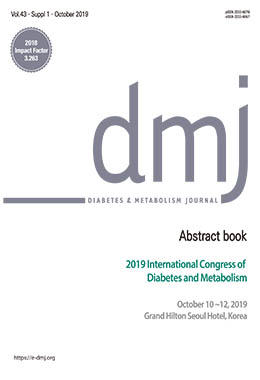Objective It has been suggested that insulin resistance, low-grade inflammation, and vitamin D deficiency are associated with obesity and sarcopenia. However, their relationships with sarcopenic obesity (SO) are unclear. We evaluated the impact of homeostasis model assessment of insulin resistance (HOMA-IR), high sensitivity C-reactive protein (hsCRP), and 25-hydroxyvitamin D (25[OH]D) levels on SO in Korean adults.
Methods This study included 493 apparently healthy adults (180 men and 313 women) enrolled in the Korean Sarcopenic Obesity Study (KSOS). Sarcopenia was defined as a skeletal muscle mass index (SMI) of 1 SD below the sex-specific mean value for a young reference group. Obesity was defined as a visceral fat area (VFA) ≥ 100 cm2. We classified the participants into four sarcopenia/obesity groups based on both SMI and VFA.
Results The prevalence of SO was 17.8% in men and 24.9% in women. In women, the SO group had higher HOMA-IR and hsCRP levels compared to the non-SO group. In men, the 25[OH]D levels were significantly lower in the SO group than the non-SO group. Both hsCRP and HOMA-IR levels were negatively correlated with SMI and positively correlated with VFA in both men and women; whereas, 25[OH]D levels were positively correlated with SMI in both men and women. Multiple binary logistic regression analysis showed that HOMA-IR and 25[OH]D levels were independently associated with SO in men, while HOMA-IR and hsCRP were significant factors predicting SO in women.
Conclusion Insulin resistance, inflammation and vitamin D deficiency were associated with SO in a Korean adult population.




